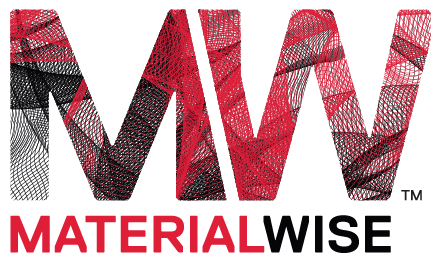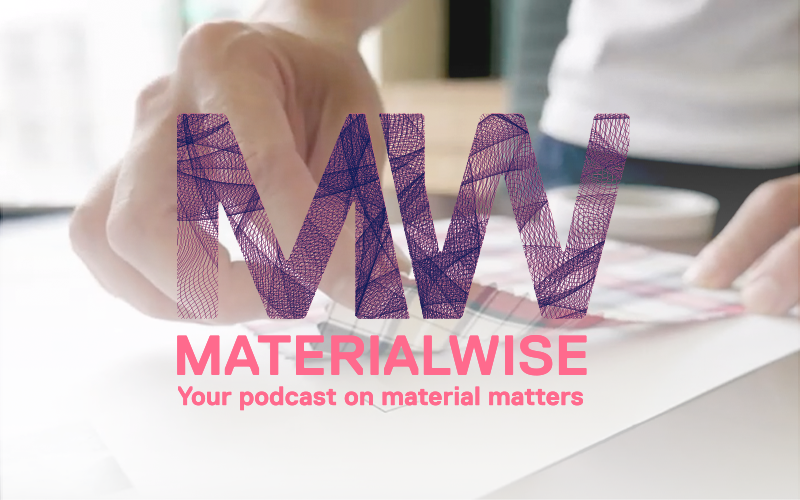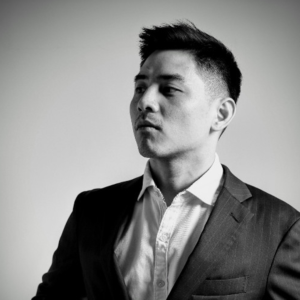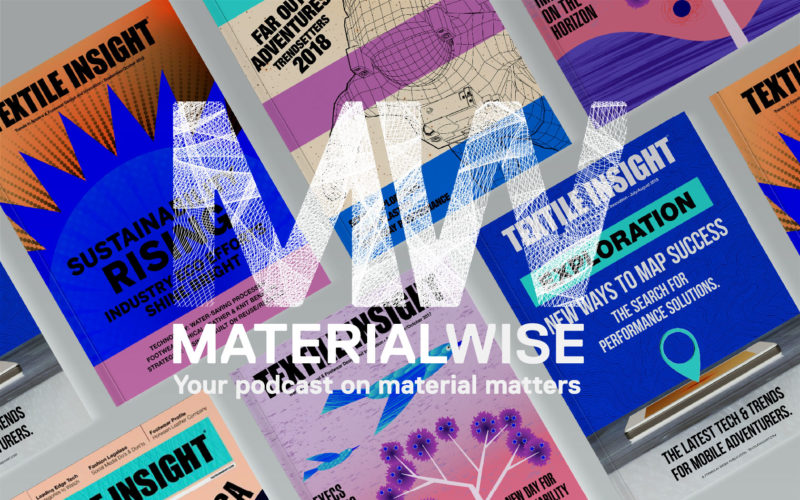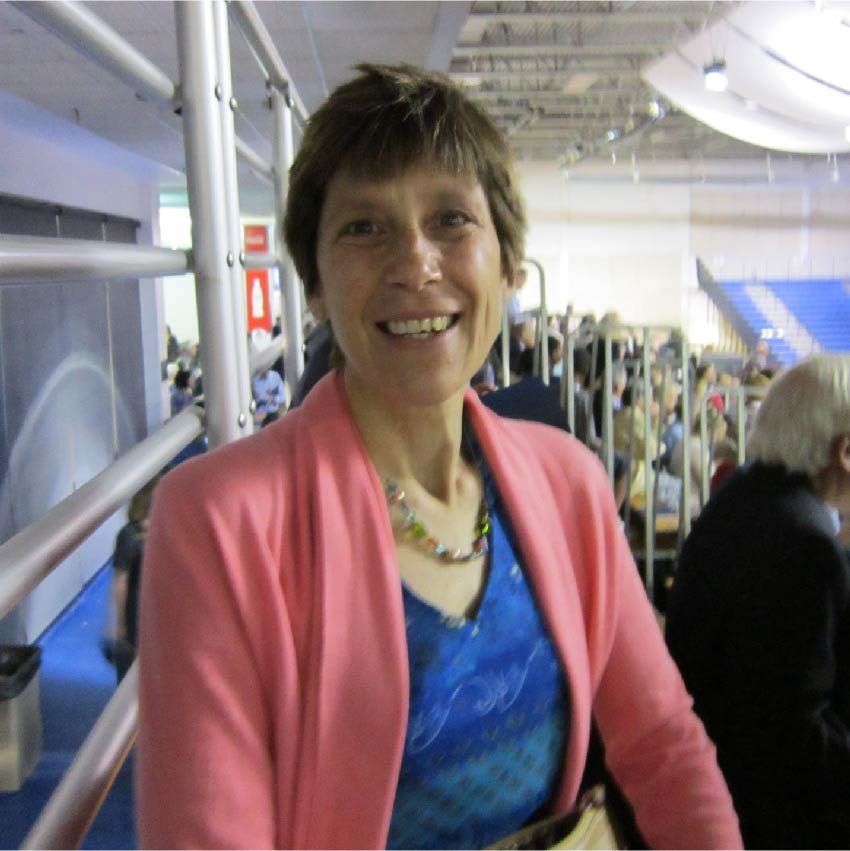Episode 16: Wayne Fan | Frontier.cool
Wayne Fan on bringing textiles to life in a digital world
Wayne shares how the Frontier Textile Collaboration Program and other digital tools help bring fabrics to life while also building community between suppliers and brands with respect to fabric samples, inventory, price quotes, and more. He also shares a few lessons he’s learned from the pandemic.
Wayne’s Interview Transcript
Nancy: Hello, I’m Nancy Fendler, and you’re listening to Material Wise, your podcast on material matters. It’s my chance to talk to designers, product developers and other guests about what inspires them to create. Why and how they select the materials they choose, and the relationships they’ve built with their customers and industry.
This is the first podcast we produced since the pandemic, and it seems like forever. I hope you’re all staying well, safe, and sane. Our guest for this episode is fitting, given how much the apparel industry and supply chain have had to turn to boosting their digital technology platforms and skills to conduct business.
Wayne Fan is the chief strategy officer of Frontier, a co-working software as a service designed to digitize fabrics, enhance supply chain management, and elevate 3D design capabilities. The company has seen a big jump in the adoption of its platform during the coronavirus, as more mills and brands have moved their businesses to the cloud to cut costs and work as efficiently as possible from home. Wayne shares how Frontier and other digital tools can help bring fabrics to life, while also building community between suppliers and brands with respect to fabric samples, inventory, price quotes, and more. He also shares a few lessons he’s learned from the pandemic. I hope you enjoy.
Nancy: Hi, Wayne, how are you doing?
Wayne: I’m great. Happy to be here. Thank you for inviting me.
Nancy: Thank you for being here. Can you give us just a little bit of background about how you got involved with Frontier?
Wayne: Frontier grew out of a previous business my partner Victor and I founded 11 years ago. I was happy to be part of the team. We delved right into the textile business. It was an OEM business model, and we’ve evolved a lot since then.
Nancy: Did you guys go to school together or anything like that? How did you-
Wayne: We did. We did. We graduated from University of Rochester, and we majored in different fields and then decided to take on this journey.
Nancy: Tell us about Frontier and how you feel it fits the need in the market.
Wayne: Over the last several months, we experienced surging demand, and primarily coming from manufacturers wanting to gain exposure because the traditional route fabric trade shows were all canceled for the entire year. So they felt the need to establish with digital tools to be able to showcase their new collections with their existing customers. That’s one angle.
And another need is that over the past several months, also due to COVID-19, many of the brands that we’ve observed really doubled down taking everything into the cloud, taking a lot of their assets into the cloud, digitized not only their assets, but also their workflow and processes. And I feel like that’s more important for organizations, such as brands, because they need to manage their image in front of consumers. But then at the same time, they need to manage the supply chain, which involves a lot of manufacturers. To have everyone working on the same page, whether that be merchandising, or quality assurance, or compliance, or material development, it’s a pretty big problem to tackle. Then a lot of brands became a lot more aware of that, so we got a lot of interest from them, as well.
Nancy: Frontier launched about a year and a half ago. How has the acceptance been since you’ve launched?
Wayne: From idea to product, it took a long time. Now, I really understand how to build products and having it accepted by the market. We’re fortunate that we’ve established couple kinds of business models that work with software providers or other cloud-based companies in the textile space, as well as directly working with many ventures in the supply chain. I believe these kinds of product market fits will only grow even in the short/medium run. So we want to really have our product more solid, and then discover new needs and perhaps fulfill some of those needs. Then in the long run we really want to build to where the digital textile supply chain model that we’ve all been waiting for, that the entire industry has been talking about for, I would say, at least a decade or, if anything, more than that.
Nancy: Yeah, and nothing like the pause that we’ve had with COVID-19 to make the supply chain think about that, right? And how digital tools are so important right now, and getting everyone connected when we can’t be together in person.
Wayne: Yeah. Just to give another example, let’s disregard the virus situation. As new designers coming out of the school, they’re learning how to design with software, different 3D software. So basically, a new generation of designers, they’re already used to the digital space, so it only makes more sense that in organizations you have technologies or workflows that can support these kinds of skill sets because you see the entire industry really transitioning more rapidly to a digital process.
Nancy: Right. Yeah. It is. You’re educating the older group, but also the younger group that’s coming on are embracing this, and you’re helping to give them access to even better tools, which will help the whole supply chain evolve and not do things as status quo. I was talking to actually a designer today, and she was talking about some of the same old ways that designers work, where you build a design, you go to the supplier for fabric, and they send you swatches, and then you look through the books and you think of that. And with COVID, or even not with the pandemic, but things need to change to expedite the process and knowing you a little bit, and we’ll talk about this, but the expense of sending swatches back and forth is very costly and not so sustainable.
Wayne Fan: I like to use the auto and the aerospace industry as an example. They adopted CAD design, 3D process into their workflow decades ago. And the reason they were able to do that, I think they’re two-fold. One is that there are so few companies in those industries if you look at the auto brands out there. But then when you compare those with the (vast) textile industry, you start to recognize even the largest brand in the world, let’s not that name names for now, that may only take up less than 1% of the global textile economy. So, it’s a vast industry and changes just doesn’t happen as quickly as an industry just have so few players. That’s one.
Secondly, for hard materials, such as steel or wood, they are much easier to render the 3D engines. That’s why these industries took on so quickly for them. For fabric soft materials there’s a lot of physical properties that you need to capture in the software. That’s why it took much longer to develop different types of software tools that can reflect the different properties of a material properly. And then you need to be able to get to that point to really promote a product that’s… Essentially, so designers can actually see 3D rendering and actually make informed decisions. Otherwise, they always going to go back to making an actual sample because the computer-rendered the sample looks nothing like the actual good. So I feel like the technology is more mature in their past two years. That allowed us to push through more rapidly.
Nancy: Yeah. Well, that’s great. The touch and feel is really important when it comes to selecting fabrics. However, you can touch and feel a million fabrics, and you can’t order a million fabrics. So your platform allows designers or product developers to edit what they’re looking at online, and you’re giving all these great notes, hand-feel notes, and then they can order the swatches that they need, based on what you’re giving them. And you’ve done a lot to help refine all those material notes so that designers can help make those decisions, or product developers can make those decisions a little bit easier before they start ordering swatches.
Wayne: We know that in the market there is a need for digital fabric material. So we set out to build a product that has almost no entry barrier for any individual user or companies to digitize their material. We don’t require any hardware, and then we keep a lot of the work in the cloud. Therefore, the entire supply chain or one manufacturer, one manufacturing partner, can at least start migrating their physical good to a cloud space and make them digital fabric materials. That’s one thing we provide, the cloud space for that, the environment for that. Because we have such a low entry point, so we start accumulating a lot of materials very fast.
The next logical step is to have a great searchability, searchability that we tackle from two ends. One is really embrace hashtags and really let the crowd, let users define what they want to be seen as. We give our users the power to define their products. That’s from one side. And then in the process we also try to organize the language tree around textile terminologies because from the designer, they speak of an item very differently from what a manufacturer may speak of an item. So it’s an ongoing process to really accumulate that language tree. So when you type in denim, I will have some indigo twills that may come up because essentially these are the same things. So then that’s the searching capability.
Lastly, I would say it is collaboration, which we find massively important is that with digital materials, we want these files, so to speak, be transferable, we want these files be able to be shared, collections can be shared among different groups working on different projects. So I would say we really build our product around these three pillars. One is digitalization, and then secondly is great search capability. And then it’s the collaboration aspect.
Nancy: I would think that the platform would be perfect for trade show organizers during this pandemic where a lot of trade shows are turning to virtual. And I’ve taken a few, both at Kingpins and Outdoor Retailer and Performance Days where some of the images that are portrayed online are a little bit static. I just think that this would be a perfect outlet for Frontier, and I’d love your feedback.
Wayne: Virtual trade shows is something that we did not anticipate in the beginning. Based on the trade shows that we’ve attended in the past, a lot of the interactions basically brand… It’s a marketplace where brands, different stakeholders come in to discuss, whether that be materials or many other things, really. But then we find our platform is already, it’s basically ready, like I mentioned. There’s the interactive feature, and then there’s the showroom for different types of textiles and all the information well-organized on one page. So it becomes a suitable, I definitely wouldn’t say perfect, but it becomes a suitable place for buyers and sellers to interact in terms of, not just on price negotiation, it’s also material development, different questions about different types of fabric.
So we are very happy to support that aspect of a trade show. And then we’re working with Taiwan Textile Federation to bring the TITAS. It’s a trade show set in October. There’s going to be a physical one. Although, there’s going to be almost… Not many brands will be attending due to the flight restriction situation. So we will definitely take that online and then support this government agency to replicate the physical trade show as much as possible. That’s what we’re working on now.
Nancy: Yeah. I know. That’s a hot topic among many right now, in terms of trade shows are such a big part of the supply chain, as we mentioned, and we’re all kind of sitting on the edge of our seats to see what’s going to happen with trade shows. But tools like yours could really help bring some assemblance to the touch and feel, even though you can’t really touch and feel. But like you were saying, you have the tools to try to bring all that hand-feel to life would be great.
So we’ve been in this pandemic for quite a few months. What have you learned? Have there been some learning lessons?
Wayne: I was surprised at how things can change so quickly and drastically in a couple weeks. I feel like no one really saw that coming. No one was really prepared. But then, of course, for those business models, that are already well-protected, well-hedged, such as businesses already in the cloud, perhaps Netflix or Amazon, businesses like them probably prospered. I don’t mean it in a bad way, but their business model is well-hedged from these kind of situations.
In Taiwan, I always say we’re pretty lucky. We’re not much affected for that long. A lot of businesses were impacted big time, but then for overall, I think we were doing okay. Business went on as usual for us. We already supported remote work, so we could get things done. And then we got a lot of interest over this time, and then so everyone’s very excited about it.
Nancy: Yeah. That’s great. You work with mills and brands all over the globe. How do you feel that they’re coping with COVID-19?
Wayne: I think almost everyone is just scrambling to find solutions, and then there’s no clean solution or product or software or platform that fills the entire need. So it’s kind of a learning curve, I think. And I think it will be helpful to give stakeholders, brands, or suppliers a step one, two, three guide, or a successful case study in terms of how business can transition themselves during this time. Or maybe not even during this time. They should really better equip themselves for what’s coming, such as physical retail locations may not be as powerful as back in the day. I’m not saying stores won’t exist, but they may become more of a brand awareness point of sale, rather than where sales activity actually happened. So yeah, back to your question, I think too many things on the table. No one really know what steps to take in an organization. So a successful case study would help a lot of people out.
Nancy: Yeah. Absolutely, Wayne. I think that if anything has taught us during this time is that we need to have a very powerful digital presence, or not we, but the whole entire supply chain brands because of social distancing, we don’t know how long it’s going to happen, and this pause could be a time for us to really rebuild our tools or embrace tools that are already developed and learn from them. You can say, “Okay, we’re going to take this time to really build up our digital presence and work on our supply chain flow, digital flow.” Or if you don’t, then who knows what will happen.
Wayne: There are so many tools out there on the market, and then I wouldn’t say any of them is particularly brand new. And these tools exist probably, some for maybe decades, some for a couple of years now. But then I would say if everyone in the industry is always too busy working, too busy to look at other tools that can achieve the same thing with even less time spent on it, you’ll never discover these new tools. So it’s really people opening their eyes, really. And these things kind of exist already. So again, for one person to do that, it’s pretty easy, but then for an organization to really dedicate themselves to really changing their processes or re-examine how to perform one task with a more efficient tool or method is something I think it’s important. Because the last thing that we want to see is that, okay, the COVID-19 is over, everyone back to the same way they were working previously. So nothing really changed, then that would be a slightly, unfortunately, I think.
Nancy: Me too. I agree. I agree. I hope that we all learn from this and grow from it. So anything else you want to share? You’ve got this new seminar or-
Wayne: It’s a local seminar that we are hosting. It’s a physical event that we’re hosting next week in Taiwan. It’s put together by the Taiwan Textile Federation, and then we are one of the primary sponsors. The message that we want to send together with some of our partners is to build the awareness, and then give people clear guidelines on what kind of actions they can take and what kind of tools can achieve what kind of results. And we will bring together some of our users, some of potential users, professionals at the brand level, professionals in AWs, Amazon, because they really provide the web infrastructure for a lot of our products. So we bring together these people and have a discussion on how we can help textile manufacturers transform digitally or adapt digital strategies into their workflow, or it could be as simple as how to use a digital product. And then we want to include everything in this event. So we want the takeaway to be very clear and precise. So back to what I was saying, so we give people steps on what you can do. And then at the end of those three steps, what you’re going to see, by providing a case study. So hopefully the message gets delivered better that way.
Nancy: Wayne, thanks so much for joining us on Material Wise and good luck with the conference. Good luck with Frontier. This is the perfect time to be in the space that you are, and I hope we can connect again soon.
Wayne: Thank you, Nancy. Thank you very much for this opportunity. And let’s talk soon.
Nancy: Thank you for listening to Material Wise. I’d like to thank the incredibly talented Woods Creative for their help in producing this podcast. Jake Nevrla mixes our episodes and composes our theme music. For more information and transcripts of each episode, please visit materialwise.co and please subscribe, rate, and review wherever you get your podcasts. Thank you, again, and until next time, take care.
Links to organizations mentioned in podcast:
- Frontier: https://frontier.cool/
- Taiwan Textile Federation: https://www.textiles.org.tw/TTF/english/home/ContentMore.aspx?kind=COREITEM&menu_id=244
